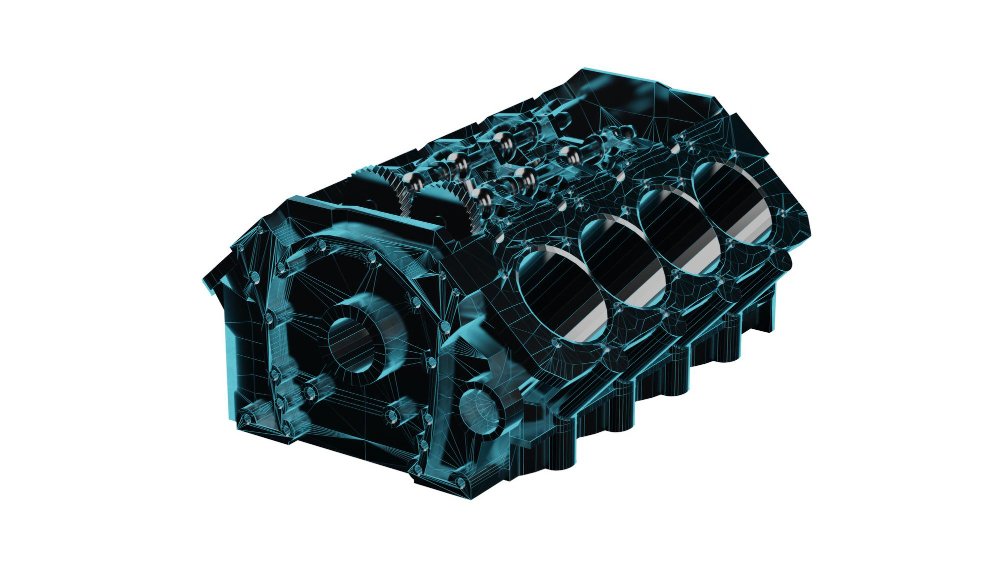Introduction: The Dawn of the Hypersonic Era
The field of aerospace engineering has entered a transformative phase where velocity and precision converge. Among the most discussed innovations stands the H13 Engines Hypersonic Vehicle Talon-A, a symbol of human ambition to break the limits of atmospheric flight. Operating at speeds exceeding Mach 5, this vehicle represents more than a technological milestone—it is a paradigm shift in propulsion science, material engineering, and computational aerodynamics.
The development of the H13 Engines Hypersonic Vehicle Talon-A signifies a new generation of autonomous hypersonic systems designed to operate in high-temperature, low-pressure conditions while maintaining aerodynamic stability and structural integrity. This fusion of thermodynamics, artificial intelligence, and material science is redefining how we envision reusable high-speed aircraft.
Overview of the H13 Engines Hypersonic Vehicle Talon-A
The H13 Engines Hypersonic Vehicle Talon-A is a state-of-the-art flight research platform intended for testing hypersonic propulsion systems and reentry vehicle technologies. Developed under a modular architecture, it integrates hybrid propulsion—utilizing both turbine-based and scramjet-based systems—to achieve sustained hypersonic flight across atmospheric layers.
The nomenclature “H13 Engines” reflects a class of hybrid turbo-scramjet propulsion units capable of transitioning seamlessly between subsonic, supersonic, and hypersonic regimes. The Talon-A serves as the testbed vehicle that validates these propulsion principles through extensive wind-tunnel modeling and live flight experiments.
This synergy between H13 Engines and the Talon-A vehicle enables scalable applications—from military reconnaissance and scientific research to future space-launch assist vehicles.
Design Philosophy and Structural Innovations
At the heart of the H13 Engines Hypersonic Vehicle Talon-A lies a meticulous design philosophy centered around three key attributes: thermal resilience, aerodynamic adaptability, and computational control.
3.1 Thermal Resilience
Operating beyond Mach 5 exposes the airframe to temperatures exceeding 1,200°C. The Talon-A incorporates a multi-layered titanium-ceramic composite reinforced with graphene nanofibers. This structure dissipates heat through radiative cooling and boundary-layer management, ensuring prolonged engine performance without structural degradation.
3.2 Aerodynamic Adaptability
The airframe geometry follows a blended-wing-body configuration optimized via Computational Fluid Dynamics (CFD). Variable leading-edge sweeps and adaptive inlet geometries allow the H13 Engines Hypersonic Vehicle Talon-A to maintain laminar flow during rapid atmospheric transitions, minimizing drag while maximizing lift-to-drag efficiency.
3.3 Computational Control
An AI-integrated control algorithm predicts boundary-layer separations, shock interactions, and flow transitions in real time. This predictive control ensures stability at extreme velocities and dynamic pressures where traditional feedback systems would fail.
The H13 Engines: The Heart of Hypersonic Propulsion
The H13 Engines represent a breakthrough in dual-mode propulsion technology, bridging the gap between turbine-based and scramjet-based flight.
4.1 Operating Principle
At lower speeds (Mach 0–3), the system functions as a turbo-ramjet. Air enters through a variable geometry inlet, compressed via mechanical turbines, and mixed with high-energy fuel for combustion. As the vehicle accelerates beyond Mach 4, the engine transitions to scramjet (supersonic combustion ramjet) mode. The compressor stages are bypassed, allowing air to flow directly through the combustion chamber at supersonic speeds.
This transition is controlled by intelligent flow regulation valves, guided by an adaptive Mach-based algorithm. Thus, the H13 Engines Hypersonic Vehicle Talon-A achieves a continuous propulsion cycle without mechanical discontinuity.
4.2 Fuel Innovation
Conventional hydrocarbon fuels cannot withstand the thermal loads of hypersonic combustion. The H13 propulsion system uses a regenerative endothermic fuel—based on JP-10 with metalized additives—that absorbs heat from the engine walls before entering combustion. This thermochemical management increases thrust while stabilizing thermal conditions.
4.3 Efficiency and Thrust-to-Weight Ratio
Preliminary simulations show a thrust-to-weight ratio exceeding 12:1 in hypersonic cruise mode. The H13 Engines Hypersonic Vehicle Talon-A therefore maintains high efficiency with minimal specific fuel consumption at Mach 6, a crucial benchmark for sustained hypersonic travel.
Avionics and AI-Driven Control Systems
Hypersonic flight presents unique challenges: delayed feedback, sensor degradation, and shock-wave interference. The H13 Engines Hypersonic Vehicle Talon-A integrates AI-assisted avionics to overcome these.
The control system employs:
-
Quantum-inspired neural processors for predictive control of airflow and temperature.
-
High-speed optical sensors to detect plasma-sheath disruptions.
-
Redundant autopilot architectures ensuring flight safety during scramjet ignition or engine transitions.
The Talon-A’s onboard AI learns from each flight iteration, optimizing future missions through machine-learning adaptation. This feature transforms the H13 Engines Hypersonic Vehicle Talon-A from a static prototype into a continuously evolving test ecosystem.
Material Engineering and Heat Management
The airframe uses nano-engineered carbon-ceramic composites embedded with tungsten micro-lattices. These materials can tolerate temperatures up to 2,000°C while maintaining tensile integrity.
The vehicle employs transpiration cooling, where cryogenic hydrogen or methane is circulated beneath the skin, releasing vapors that form a cooling film. This prevents boundary-layer detachment—a critical aspect of maintaining lift at hypersonic velocities.
The combination of structural ceramics, heat-resistant alloys, and smart coatings ensures that the H13 Engines Hypersonic Vehicle Talon-A remains operational after multiple high-temperature cycles, enabling reusability—an economic advantage over traditional expendable hypersonic vehicles.
Flight Profile and Mission Architecture
A typical mission profile for the H13 Engines Hypersonic Vehicle Talon-A involves a two-stage operation:
-
Launch Assist:
The vehicle is air-launched from a carrier aircraft at approximately 35,000 feet. This approach minimizes fuel use and allows rapid ascent without ground-based rocket propulsion. -
Hypersonic Cruise:
Once released, the H13 engine ignites, accelerating the Talon-A to speeds between Mach 5 and Mach 7. At this altitude (around 100,000 feet), the thin atmosphere reduces drag, and the vehicle performs its test missions—collecting aerodynamic and combustion data. -
Glide and Recovery:
After completing the hypersonic test phase, the engine shuts down, and the Talon-A reenters controlled glide mode. Precision flaps and AI guidance direct it toward recovery zones, ensuring reusable landing capability.
This reusability makes the H13 Engines Hypersonic Vehicle Talon-A a cost-effective tool for repeated experimental testing—an essential feature for developing future hypersonic transports and defense platforms.
Simulation and Computational Analysis
Before physical testing, extensive simulations of the H13 Engines Hypersonic Vehicle Talon-A are conducted using multi-physics solvers that integrate:
-
Navier-Stokes equations for compressible flow dynamics
-
Finite-element thermal analysis for heat distribution
-
Monte Carlo uncertainty modeling for turbulence prediction
-
AI-assisted optimization for adaptive control strategies
These digital simulations create a “virtual wind tunnel” that reduces the cost and risk of prototype testing. The H13 Engines Hypersonic Vehicle Talon-A thus benefits from continuous computational refinement before each physical mission.
Research Applications and Strategic Relevance
The H13 Engines Hypersonic Vehicle Talon-A serves multiple purposes beyond propulsion testing. It is a cornerstone for research in:
-
Thermal protection systems for reentry vehicles.
-
Advanced navigation under plasma interference.
-
AI-guided adaptive flight control in hypersonic turbulence.
-
Reusable aerospace manufacturing systems.
Strategically, this platform demonstrates the potential for hypersonic strike, reconnaissance, and space-launch support missions. It bridges the technological divide between atmospheric aviation and near-space orbital transition vehicles.
Comparative Analysis with Existing Hypersonic Platforms
While vehicles such as the X-51A Waverider and X-43A demonstrated early hypersonic capabilities, the H13 Engines Hypersonic Vehicle Talon-A introduces superior modularity and reusability. Unlike its predecessors, which relied on expendable rocket boosters, the Talon-A’s hybrid propulsion allows self-sustained acceleration and multiple flight reuses.
| Parameter | X-51A Waverider | X-43A | H13 Engines Talon-A |
|---|---|---|---|
| Max Speed | Mach 5.1 | Mach 9.6 | Mach 7 (sustained) |
| Propulsion | Scramjet only | Rocket + Scramjet | Hybrid turbo-scramjet |
| Reusability | No | No | Yes |
| Flight Control | Manual + Pre-programmed | Autonomous (limited) | AI-integrated adaptive control |
| Thermal Protection | Ceramic composites | Carbon-silicon | Titanium-graphene nano-hybrid |
This data highlights how the H13 Engines Hypersonic Vehicle Talon-A serves as a technological evolution, combining proven methodologies with futuristic adaptability.
Environmental and Economic Implications
Despite operating at extreme speeds, the H13 Engines Hypersonic Vehicle Talon-A incorporates sustainable engineering principles. The hybrid fuel system minimizes emissions by optimizing combustion efficiency and reducing unburned hydrocarbons.
The reusability of both the vehicle and its propulsion components drastically reduces developmental costs and environmental impact. Unlike expendable rockets, the Talon-A’s modular recovery system allows quick refurbishment and redeployment.
Economically, the H13 Engines Hypersonic Vehicle Talon-A opens new commercial pathways in rapid global transportation, space cargo delivery, and atmospheric data acquisition. Its development stimulates advanced manufacturing sectors involving heat-resistant materials and AI flight systems.
Challenges and Future Research Directions
While the H13 Engines Hypersonic Vehicle Talon-A marks a significant milestone, several challenges remain:
-
Thermal Stress and Material Fatigue:
Continuous thermal cycling can degrade composite interfaces, necessitating research in self-healing materials. -
Combustion Stability:
Achieving stable supersonic combustion remains a complex phenomenon influenced by fuel injection geometry and shock interactions. -
Communication Blackout:
At hypersonic velocities, plasma formation around the vehicle disrupts radio transmission. The Talon-A experiments with quantum-encrypted laser communication to mitigate this issue. -
Cost of Testing and Validation:
Despite reusability, the infrastructure required for hypersonic testing—high-altitude launch systems and tracking networks—remains capital-intensive.
Future research aims to integrate magnetic-plasma control, energy-recuperation cycles, and real-time AI co-piloting into the next iteration of the H13 Engines Hypersonic Vehicle Talon-A, potentially designated as the Talon-B system.
The Broader Vision: Toward Hypersonic Accessibility
The long-term vision behind the H13 Engines Hypersonic Vehicle Talon-A extends beyond defense or experimental research—it seeks to democratize hypersonic flight. By making reusable, safe, and cost-efficient platforms available for global research collaborations, it paves the way for:
-
Hypersonic passenger aircraft capable of intercontinental travel in under two hours.
-
Spaceplane systems enabling on-demand satellite deployment.
-
Rapid logistics networks that reshape military and commercial transportation.
Through this perspective, the H13 Engines Hypersonic Vehicle Talon-A becomes not merely an engineering marvel but a blueprint for a future aerospace ecosystem.
Ethical and Safety Considerations
With the advent of reusable hypersonic vehicles, ethical frameworks are imperative. The dual-use nature of hypersonic technology means that innovations for research can also enhance military capabilities. Thus, global treaties and transparent international cooperation will be crucial for preventing misuse.
Safety is also a paramount concern. The H13 Engines Hypersonic Vehicle Talon-A employs multiple failsafe mechanisms, including autonomous self-termination protocols and geofencing to prevent off-trajectory incidents. Its design reflects an awareness that technological progress must align with responsible application.
Conclusion: The Symbol of Human Ingenuity
The H13 Engines Hypersonic Vehicle Talon-A embodies the intersection of physics, computation, and courage. It transcends the boundaries of traditional aerospace engineering by achieving controlled, reusable hypersonic flight—a dream that once belonged only to science fiction.
From its hybrid propulsion system and AI-driven controls to its resilient materials and environmental awareness, the H13 Engines Hypersonic Vehicle Talon-A defines the next era of aerospace evolution. It stands as a living laboratory, continuously refining our understanding of speed, stability, and sustainability.
As researchers, engineers, and dreamers continue to enhance its performance, the H13 Engines Hypersonic Vehicle Talon-A will remain the touchstone for all future advancements in high-velocity flight—proof that when science and imagination unite, the impossible becomes merely the next step.


